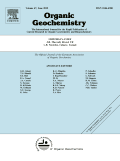
ORGANIC GEOCHEMISTRY
Scope & Guideline
Exploring the Depths of Organic Interactions
Introduction
Aims and Scopes
- Organic Matter Composition and Characterization:
Research articles often delve into the molecular composition of organic matter, employing advanced techniques such as mass spectrometry and gas chromatography to characterize organic compounds in sediments, oils, and other geological matrices. - Biogeochemical Processes and Environmental Interactions:
The journal highlights studies that investigate the biogeochemical processes influencing organic matter transformation, including biodegradation, diagenesis, and the impact of environmental factors on organic geochemistry. - Paleoenvironmental and Paleoclimatic Reconstructions:
A significant area of focus is the use of organic geochemical proxies to reconstruct past environmental conditions, climate changes, and the ecological dynamics of ancient ecosystems. - Source and Maturity Evaluation of Hydrocarbons:
Numerous studies assess the source rock characteristics and thermal maturity of hydrocarbons, providing insights into petroleum formation, migration, and the geochemical signatures of various oil types. - Analytical Method Development:
The journal also emphasizes the development of novel analytical methods for the extraction and characterization of organic compounds, enhancing the precision and accuracy of organic geochemical analyses.
Trending and Emerging
- Advanced Analytical Techniques:
There is a growing trend towards utilizing high-resolution mass spectrometry and other cutting-edge analytical methods to explore organic compounds at unprecedented levels of detail, enhancing our understanding of complex organic mixtures. - Interdisciplinary Approaches to Organic Geochemistry:
Research increasingly incorporates interdisciplinary approaches, combining organic geochemistry with microbiology, ecology, and climate science to address complex environmental challenges and the dynamics of organic matter in various ecosystems. - Impacts of Climate Change on Organic Matter Dynamics:
Emerging studies are focusing on how climate change affects organic matter composition and behavior in different environments, including aquatic and terrestrial ecosystems, reflecting a broader interest in the implications of global change. - Microbial Influence on Organic Matter Transformation:
There is an increasing emphasis on understanding the role of microbial communities in the degradation and transformation of organic compounds, highlighting the significance of biological processes in organic geochemistry. - Paleoenvironmental Applications of Organic Geochemistry:
Research aimed at reconstructing past climates and environments using organic geochemical proxies is gaining traction, with a focus on understanding historical ecological dynamics and their implications for current environmental changes.
Declining or Waning
- Traditional Hydrocarbon Geochemistry:
Studies focusing exclusively on conventional hydrocarbon geochemistry, particularly those that do not integrate modern analytical methods or interdisciplinary approaches, appear to be decreasing. This may be due to the growing emphasis on more complex organic matter analysis and environmental interactions. - Static Biomarker Studies:
Research concentrating solely on static biomarker analyses without considering temporal changes or environmental dynamics is waning. The field is moving towards more dynamic studies that incorporate ecosystem responses and changes over time. - Simplistic Environmental Impact Assessments:
Papers that offer basic environmental impact assessments of organic compounds without comprehensive biogeochemical context are becoming less frequent, as there is a push for more integrated studies that consider multiple environmental factors and their interactions.
Similar Journals
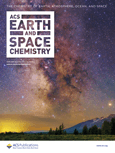
ACS Earth and Space Chemistry
Unveiling the Secrets of Our Planet and the UniverseACS Earth and Space Chemistry is a leading journal published by the American Chemical Society, dedicated to advancing the interdisciplinary fields of atmospheric science, geochemistry, and planetary science. Since its inception in 2017, this journal has quickly established itself as a pivotal resource for researchers and professionals, boasting an impressive impact factor and securing its position in Q2 of the Scopus rankings for 2023 across its relevant categories. The journal publishes cutting-edge research articles, reviews, and commentaries that explore the chemical processes influencing Earth and space environments. By providing open access to invaluable research from experts around the globe, it encourages collaboration and dissemination of knowledge, crucial for addressing pressing environmental and planetary challenges. Situated in the heart of Washington, D.C., the journal's editorial office works diligently to ensure rigorous peer review and high-quality publications that meet the needs of its diverse audience, including scholars and students keen to stay abreast of developments in these dynamic fields.

GEOCHEMICAL JOURNAL
Illuminating the Path of Geochemical Research Since 1966GEOCHEMICAL JOURNAL, published by the Geochemical Society of Japan, stands as a pivotal platform for researchers and professionals dedicated to the fields of geochemistry and petrology, as well as geophysics. With the ISSN 0016-7002 and E-ISSN 1880-5973, this journal has been disseminating cutting-edge research since its inception in 1966 and continues to provide invaluable insights into the complexities of Earth's processes. Currently categorized in the Q3 quartile for both Geochemistry and Petrology and Geophysics, the journal ranks in the 40th and 36th percentiles, respectively, as per Scopus metrics, reflecting its growing influence and relevance in the scientific community. The journal accepts a range of scholarly articles, aiming to foster a deeper understanding of geochemical phenomena while promoting interdisciplinary collaboration among academicians and practitioners. Although not open access, the GEOCHEMICAL JOURNAL's commitment to quality research and education underscores its vital role in advancing the discourse within geoscience.

GEOCHEMISTRY INTERNATIONAL
Fostering Innovation in Earth and Planetary SciencesGEOCHEMISTRY INTERNATIONAL, an esteemed journal published by MAIK NAUKA/INTERPERIODICA/SPRINGER, serves as a vital platform for researchers in the fields of geochemistry, petrology, and geophysics. With a deep history reaching back to its inception, the journal spans significant converged years from 1977 to 1978 and continues its publication through 2024. Although it currently does not offer Open Access options, its scholarly impact is underscored by an established reputation indicated by its Q3 categorization in both Geochemistry and Petrology and Geophysics for 2023. Researchers can leverage this platform to disseminate groundbreaking findings and engage with contemporary discussions in Earth and planetary sciences, where it ranks at the 39th and 32nd percentiles within its respective categories. The journal is an essential resource for professionals, students, and scholars seeking to deepen their understanding of geochemical processes and evolve scientific discourse within this dynamic field.
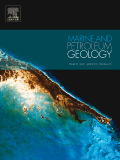
MARINE AND PETROLEUM GEOLOGY
Fostering Interdisciplinary Dialogue in Earth SciencesMarine and Petroleum Geology, published by Elsevier Science Ltd, is a premier, multidisciplinary journal that addresses critical advancements in the fields of geology, geophysics, oceanography, stratigraphy, and economic geology. With an impressive 2023 impact factor reflecting its influence across these vital domains, this journal maintains a prestigious standing, having achieved a Q1 ranking in multiple categories, including Economic Geology and Geophysics. Since its inception in 1984, it has been a key platform for researchers and practitioners to disseminate innovative findings, foster interdisciplinary dialogue, and enhance our understanding of geological processes affecting marine and petroleum resources. The journal is particularly valuable for those looking to stay abreast of the latest developments in Earth sciences, contributing to both academic knowledge and practical applications. Available through traditional subscription access, it serves as a cornerstone resource for scientists, students, and professionals eager to engage with cutting-edge research.

Frontiers in Earth Science
Your Gateway to Cutting-Edge Earth Science DiscoveriesFrontiers in Earth Science is a leading open-access journal published by FRONTIERS MEDIA SA, based in Switzerland. With its ISSN N/A and E-ISSN 2296-6463, this journal has firmly established itself in the realm of Earth and Planetary Sciences, evidenced by its exceptional Q1 ranking in the 2023 category of Earth and Planetary Sciences (miscellaneous) and a solid position of Rank #66/195 in Scopus, placing it in the 66th percentile among its peers. Since its inception in 2013, Frontiers in Earth Science has embraced the open access model, promoting widespread dissemination and accessibility of research findings. The journal covers a broad scope, including areas such as geology, meteorology, oceanography, and environmental science, fostering interdisciplinary communication and advancement. Researchers, professionals, and students looking to stay at the forefront of Earth science research will find an invaluable resource in this journal, which not only curates high-quality research but also supports innovative and impactful studies that address the pressing challenges facing our planet today.
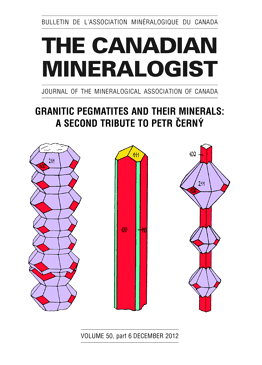
CANADIAN MINERALOGIST
Pioneering Discoveries in Geochemical and Petrological StudiesCANADIAN MINERALOGIST is a prestigious academic journal published by the Mineralogical Association of Canada, primarily focusing on the fields of Geochemistry and Petrology. Established in 1980, this journal has fostered a rich tradition of scholarly communication, offering a platform for researchers from around the world to share significant advancements and findings related to mineral science. With an impact factor that reflects its relevance within the scientific community, the journal occupies a notable position, ranked in the Q3 quartile within its category according to the 2023 assessments. The E-ISSN 1499-1276 ensures that online access is readily available, making it easier for readers to engage with cutting-edge research. With its headquarters in Quebec, Canada, CANADIAN MINERALOGIST not only contributes to the academic landscape in North America but also plays a vital role globally in advancing the understanding of mineralogy. Its commitment to high-quality publishing supports both the dissemination of knowledge and the nurturing of a vibrant scientific community.

Geochemical Perspectives Letters
Empowering the global community with open-access geochemical insights.Geochemical Perspectives Letters, published by the European Association of Geochemistry, is a leading open-access journal that has been at the forefront of geochemical research since its inception in 2015. Based in France, this journal is dedicated to disseminating high-quality, original research and reviews across the fields of Environmental Chemistry, Geochemistry, and Petrology, and Geology. With an impressive Q1 ranking in multiple categories, and notable Scopus rankings placing it among the top-tier journals in Earth Sciences, Geochemical Perspectives Letters aims to foster scientific dialogue and collaboration among researchers and professionals. Its open-access model ensures widespread dissemination of knowledge, making it accessible to a diverse audience, including students and seasoned experts alike. As the journal continues to converge research insights from 2015 to 2024, it remains a pivotal resource for those striving to understand and address the complexities of our planet's geochemical processes.
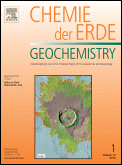
Geochemistry
Bridging Theory and Application in Earth SciencesGeochemistry is a distinguished academic journal published by Elsevier GmbH, focusing on the intricate study of geochemical processes across earth systems. With its ISSN 0009-2819 and E-ISSN 1611-5864, this journal serves as a crucial platform for scholars and researchers eager to disseminate their latest findings in geochemistry, petrology, and geophysics. The journal has established itself within the scientific community, achieving a Q2 ranking in both Geochemistry and Petrology as well as Geophysics, showcasing its significant impact and relevance—ranking 18th out of 165 in Geophysics and 26th out of 154 in Geochemistry and Petrology according to Scopus. From its inception in 1978 to its ongoing contributions through 2024, Geochemistry remains a vital resource for academic discourse and innovation in earth sciences. As an open-access title, it allows for broader dissemination of knowledge, promoting accessibility for researchers, students, and professionals. Whether you are engaged in theoretical research or applied studies, Geochemistry provides the insights necessary to advance our understanding of the planet's chemical complexity.
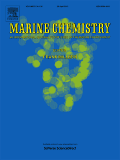
MARINE CHEMISTRY
Decoding the Chemical Mysteries of the OceanMARINE CHEMISTRY, published by Elsevier, is a premier international journal that has been at the forefront of advancing knowledge in the fields of chemistry, oceanography, and environmental science since its inception in 1972. As indicated by its impressive impact factor and its numerous Q1 rankings in Chemistry, Oceanography, and Water Science and Technology for 2023, the journal is a vital resource for researchers and professionals dedicated to addressing critical issues related to marine environments and their chemical dynamics. The journal publishes high-quality research that explores various aspects of chemical processes in aquatic systems, aiming to bridge the gap between theoretical studies and practical applications. With a significant emphasis on interdisciplinary work, MARINE CHEMISTRY serves as a platform for sharing innovative research findings that contribute to the sustainability and health of marine ecosystems. Although it is not an open-access publication, its comprehensive repository of scholarly articles remains accessible through institutional subscriptions, providing limitless opportunities for growth and discovery in the field.

CARBONATES AND EVAPORITES
Connecting Research and Discovery in GeochemistryCARBONATES AND EVAPORITES is a distinguished peer-reviewed journal published by Springer, with a dedicated focus on the geochemical and petrological aspects of carbonates and evaporite minerals. Since its inception in 1986, the journal has served as a vital platform for disseminating high-quality research, contributing significantly to the understanding of these essential geological formations. With an impressive Scopus ranking in the 49th percentile and categorized in the Q3 quartile for Geochemistry and Petrology in 2023, it stands as a credible source for both researchers and professionals in the field. The journal is committed to publishing original research articles, reviews, and technical notes that enhance knowledge and foster discussion in the community. Although not an open-access publication, it continues to provide critical insights and findings that influence advancements in Earth and planetary sciences. Operating from its base in Germany, the journal is poised for continued relevance as it approaches the convergence year of 2024, inviting contributions that explore the richness of carbonate and evaporite studies.